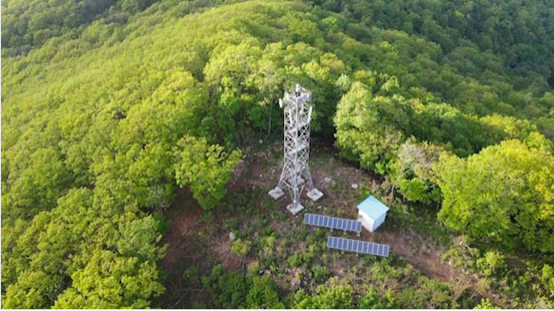Case #2
Light up the way home through technology for the Amur Tiger and Amur Leopard.
The second case study shared by Xing Zhenchao is Huawei's use of technology on protecting wild animals, which is related to the Amur Tiger and Amur Leopard. It also echoes to the policy of encouraging the intelligent construction for nature reservation.
The Amur tiger is the world's largest cat, also as the precious species at the top of the food chain. Normally living in the vast temperate mixed forests of Russia's far East and northeast China. In the past 100 years, tigers and leopards have been threatened with extinction due to habitat degradation and human activities.
During the interview, Xing Zhenchao introduced the difficulties existing in the protecting tigers and leopards with scientific research:
"We set up infrared cameras by walking over mountains and mountains, regularly changing the data card and battery. However, eventually, the final data is often from half a year ago or more. It's so difficult to carry out the protection work efficiently since the monitoring data cannot be obtained on time."
Now, all of this is expected to change through the power of technology.
In August 2017, China launched a pilot project for the Amur Tiger and Leopard National Park on the border between Jilin and Heilongjiang provinces, with a planned area of 14,600 square kilometers, which is 1.6 times the size of Yellowstone National Park in the US. As an institutional pilot, the park is exploring innovative ways and technologies to protect its precious natural resources.

700M LTE base station in Hubao National Park, Northeast China. (Source: Huawei official)
In January 2020, the National Forestry and Grassland Administration announced that the construction of an integrated monitoring system had been completed in the 5,000-square-kilometer tiger and leopard intensive activity area in the Northeast China National Park. In the words of Li Chunliang, deputy director of the National Forestry and Grassland Administration. He said at the opening ceremony, "the monitoring and supervision of natural resources in national parks will truly enter the era of big data and artificial intelligence."
It not only means an overall acceleration in conservation and research but also enlightens other nationals. But how? Xing Zhenchao then introduced the ICT plan for the Amur Tiger and Leopard National Park:
(1) Make use of the original forest fire tower, to create wired wireless fusion and broadband integrated communication network according to local conditions.
(2) With the help of the communication network, the National Park monitoring center can realize live monitoring and information transmission of various animals and plants, soil, water quality, air, fire prevention, and theft.
(3) The guardian patrol can be tracked anytime via video-voice call and digital report.
By the end of 2019, the monitoring system had identified more than 1,000 images of wildlife activities and natural resources such as the Amur tiger and Leopard, and more than 1 million wild sika deer.
Technology expands our human imagination
Without a doubt that we are in a society of change and transformation. And we as human beings have one of the distinctive abilities which are hypothetical thinking, as Brazil philosopher Ruben Alves (Ruben David goncalves) tells us that the elements of the world today can be challenged, shack, reorganize, and rebirth. Fortunately, this imaginative capacity we have is essential to our role as human beings.
To a certain degree, Huawei’s exploration is extending the boundaries of the human imagination through technology that can help us rethink the effective ways of organizing and transforming society.
According to Huawei's public information, the digital inclusive project mainly focuses on fair quality education, protecting the fragile environment, promoting health, and balanced development. In addition to the above two natural guardian projects, Huawei also operates many projects, including mobile digital classroom DigiTruck. StorySign, a customized APP for deaf children to read. Track. AI, an APP for screening children for eye diseases and protection.

Huawei's DigiTruck is a mobile digital classroom made out of truck containers. Students can use smartphones and laptops on the bus to learn from the Internet. And VR devices on the bus can also integrate more innovative educational methods into the classroom. The project focuses on training Kenyan rural teachers, unemployed youth, and rural women. (Source: Huawei)
In its annual report, Huawei also predicted an era of digital natives, in which the digital transformation of enterprises and the application scenarios of digital technologies will massively increase.
In the future, as the scale of China's digital economy continues to expand, digital technology will be widely used in all sectors of society. Enterprises should also take the initiative to care about global common development and human issues while expanding new markets. We should mainly focus on maintaining biodiversity, achieve educational equity, eradicate poverty, and inequality through digital technology.
The column of an enterprise involving biodiversity conservation is expecting more ambition and perspective. We are looking forward to communicating and hear from those excellent entrepreneurs. Determined and powerful actions are needed for leading us to an inclusive and prosperous world.
